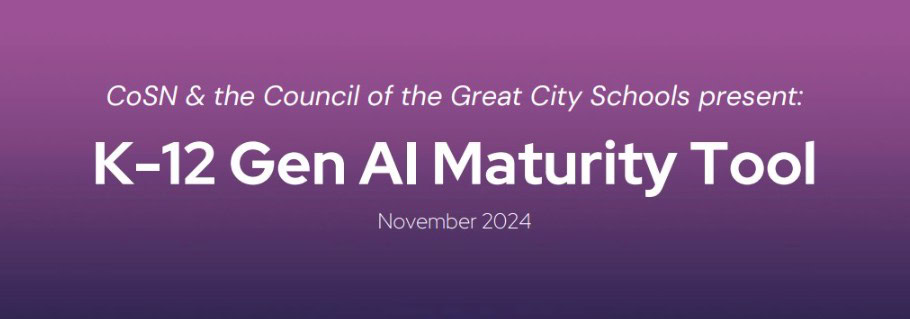Playlab AI partners with Amazon to make its AI learning software affordable to schools and districts in selected US region – EdTech Innovation Hub

Report on the Amazon AI Innovation Fund and its Alignment with Sustainable Development Goals
Introduction: A Strategic Partnership for Sustainable Development
A new initiative, the Amazon AI Innovation Fund, has been established through a partnership between Amazon and Playlab AI. This program offers grants to select school districts in the United States to integrate Artificial Intelligence (AI) into their educational frameworks. The initiative directly supports several United Nations Sustainable Development Goals (SDGs), primarily focusing on Quality Education (SDG 4), Decent Work and Economic Growth (SDG 8), Industry, Innovation, and Infrastructure (SDG 9), and Partnerships for the Goals (SDG 17).
Advancing SDG 4: Quality Education
The core mission of the fund is to enhance educational outcomes by embedding AI literacy and application into the curriculum. This directly contributes to the targets of SDG 4 by promoting inclusive and equitable quality education and lifelong learning opportunities for all.
- Enhancing Teacher Capacity: The program provides professional development through teacher AI workshops and learning communities, addressing SDG Target 4.c by increasing the supply of qualified teachers equipped with modern technological skills.
- Developing Relevant Student Skills: Students will engage in hands-on AI building and design AI-powered solutions to real-world problems. This aligns with SDG Target 4.4, which aims to increase the number of youth and adults with relevant technical skills for employment and entrepreneurship.
- Fostering Innovation in Instruction: The initiative supports the creation of custom AI tools to improve instruction and address operational challenges, thereby modernizing educational infrastructure and learning methodologies.
Supporting SDG 8 and SDG 9: Economic Growth and Innovation
By equipping students with advanced AI skills, the program prepares the next generation for the future of work, fostering innovation and contributing to sustainable economic growth.
- Future-Ready Workforce: The fund helps cultivate a workforce proficient in AI, a critical skill for driving economic productivity and innovation, which is central to SDG 8 (Decent Work and Economic Growth).
- Driving Technological Innovation: The initiative encourages schools and districts to become hubs of innovation, aligning with SDG 9 (Industry, Innovation, and Infrastructure) by promoting scientific research and upgrading the technological capabilities of the education sector.
Exemplifying SDG 17: Partnerships for the Goals
The structure of the Amazon AI Innovation Fund is a model for multi-stakeholder collaboration, a key principle of SDG 17. The partnership effectively leverages the unique strengths of different sectors to achieve common goals.
- Corporate Sector: Amazon provides significant financial backing, covering 80 percent of the program costs for ten selected applicants.
- Educational Technology Sector: Playlab AI offers specialized expertise, helping districts design and implement tailored plans for AI learning and innovation.
- Public Sector: School districts in Columbia, Atlanta, Maryland, Virginia, Seattle, Chicago, and Nashville are invited to apply, ensuring the program is grounded in local educational contexts and needs.
- Government Initiative: The fund aims to support the White House Presidential AI Challenge, aligning local efforts with national strategic priorities.
Program Implementation and Sustainability
The initiative is designed for long-term impact by building sustainable, internal AI expertise within participating schools. Accepted applicants will present their work at a regional showcase in summer 2026, providing a platform for sharing knowledge and best practices. This focus on building lasting capacity ensures that the educational benefits and contributions to the SDGs will continue beyond the initial funding period.
Analysis of SDGs in the Article
1. Which SDGs are addressed or connected to the issues highlighted in the article?
-
SDG 4: Quality Education
- The article’s central theme is the integration of Artificial Intelligence (AI) into school curricula. This directly relates to improving the quality and relevance of education by equipping both students and teachers with modern technological skills. The initiative aims to “jumpstart AI learning,” “build AI literacy,” and “improve instruction,” all of which are core components of providing quality education.
-
SDG 9: Industry, Innovation, and Infrastructure
- The program described is designed to foster innovation from a young age. By tasking students with “designing AI-powered solutions to real world problems” and giving districts a chance to “design innovations,” the initiative directly supports the goal of promoting innovation and upgrading technological capabilities.
-
SDG 17: Partnerships for the Goals
- The entire initiative is a multi-stakeholder partnership. It involves private companies (Amazon, Playlab AI) collaborating with public institutions (school districts in Columbia, Atlanta, etc.) and is aligned with a government initiative (the White House Presidential AI Challenge). This public-private partnership model, including a shared funding mechanism, is a clear example of SDG 17 in action.
2. What specific targets under those SDGs can be identified based on the article’s content?
-
Under SDG 4 (Quality Education):
- Target 4.4: By 2030, substantially increase the number of youth and adults who have relevant skills, including technical and vocational skills, for employment, decent jobs and entrepreneurship. The article addresses this by focusing on “student AI building” and helping students and teachers “build AI literacy,” which are critical technical skills for the future workforce.
- Target 4.c: By 2030, substantially increase the supply of qualified teachers. The program directly tackles this by providing “teacher AI workshops” and creating “professional learning communities” to build “internal AI expertise” within schools, thereby upgrading teacher qualifications to meet modern educational demands.
-
Under SDG 9 (Industry, Innovation, and Infrastructure):
- Target 9.5: Enhance scientific research, upgrade the technological capabilities of industrial sectors… encouraging innovation. The article highlights that the fund gives schools a chance to “design innovations” and encourages students to create “AI-powered solutions.” This fosters a culture of innovation and builds a pipeline of future innovators.
-
Under SDG 17 (Partnerships for the Goals):
- Target 17.17: Encourage and promote effective public, public-private and civil society partnerships. The collaboration between Amazon, Playlab AI, and various school districts, with a defined cost-sharing model (“Amazon will cover 80 percent… schools or districts asked to contribute the remaining costs”), is a direct implementation of this target.
3. Are there any indicators mentioned or implied in the article that can be used to measure progress towards the identified targets?
-
For SDG 4 (Quality Education):
- Number of teachers trained: Progress can be measured by the number of educators participating in the “teacher AI workshops” and “professional learning communities.”
- Number of students with AI skills: The number of students engaged in “student AI building” activities would serve as a direct indicator of skills development.
-
For SDG 9 (Industry, Innovation, and Infrastructure):
- Number of innovations developed: The quantity of “custom AI apps” and “AI-powered solutions” created by the teams would be a clear measure of innovation output.
- Participation in national challenges: The number of projects submitted to the “White House AI Challenge” would indicate the success of the program in fostering high-quality, recognized innovation.
-
For SDG 17 (Partnerships for the Goals):
- Number of partnerships established: The article states the grant is for “ten applicants,” implying that the formation of ten distinct public-private partnerships is a measurable outcome of the initiative.
Summary Table of SDGs, Targets, and Indicators
| SDGs | Targets | Indicators (Implied from the article) |
|---|---|---|
| SDG 4: Quality Education | Target 4.4: Increase the number of youth with relevant technical skills. | Number of students participating in “student AI building” and developing “AI literacy.” |
| Target 4.c: Increase the supply of qualified teachers. | Number of teachers attending “teacher AI workshops” and participating in “professional learning communities.” | |
| SDG 9: Industry, Innovation, and Infrastructure | Target 9.5: Enhance research and encourage innovation. | Number of “custom AI apps” and “AI-powered solutions” created; Number of projects submitted to the “White House AI Challenge.” |
| SDG 17: Partnerships for the Goals | Target 17.17: Promote effective public-private partnerships. | Number of school districts (“ten applicants”) forming partnerships with Amazon and Playlab AI. |
Source: edtechinnovationhub.com

What is Your Reaction?
 Like
0
Like
0
 Dislike
0
Dislike
0
 Love
0
Love
0
 Funny
0
Funny
0
 Angry
0
Angry
0
 Sad
0
Sad
0
 Wow
0
Wow
0








































































